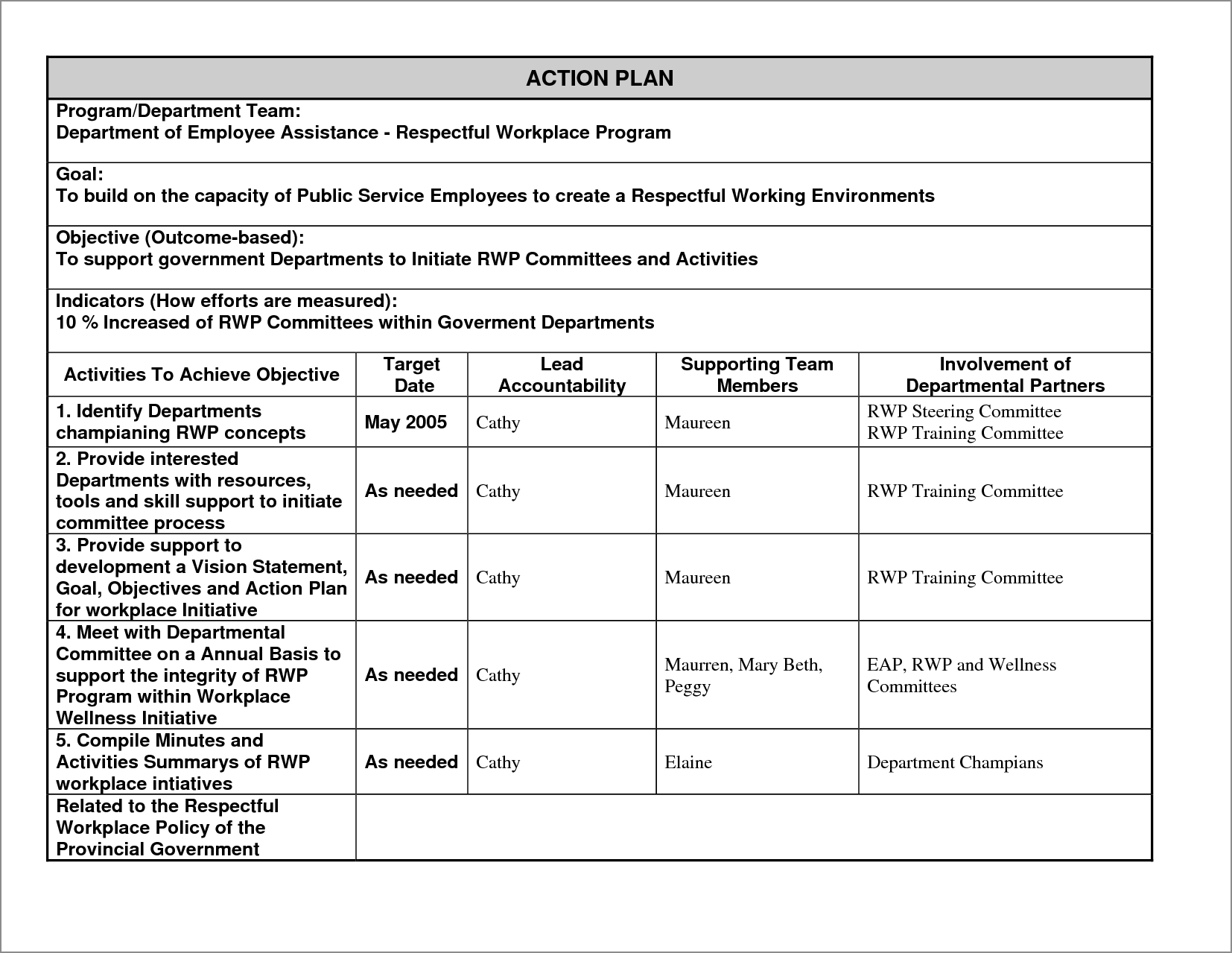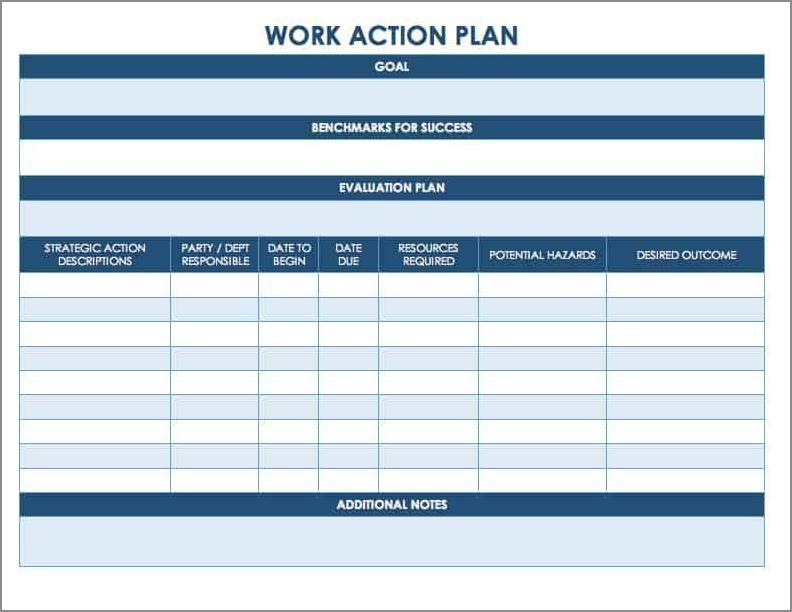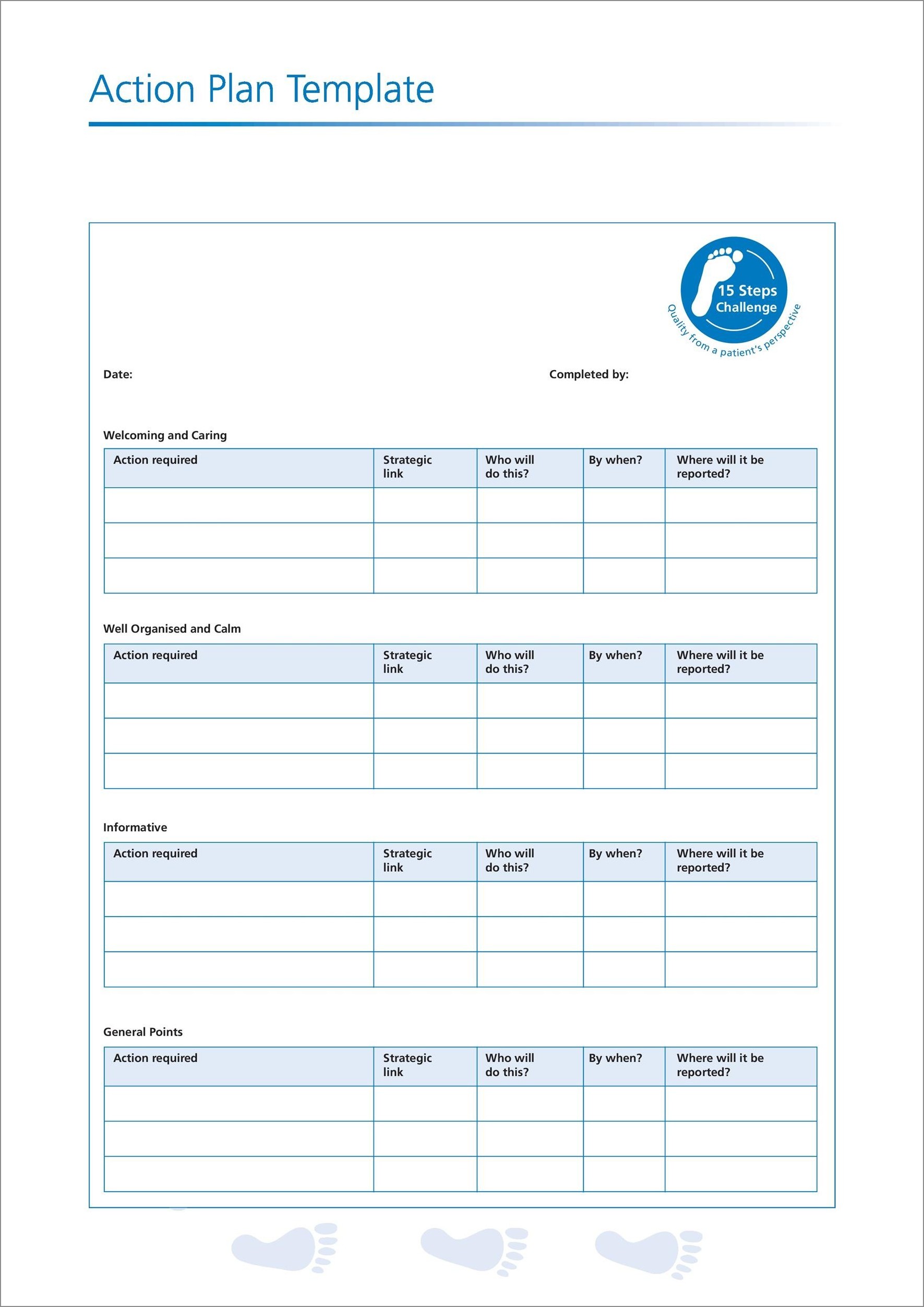
Having a clear and well-structured work action plan is crucial for achieving success in any project or endeavor. A work action plan serves as a roadmap that outlines the tasks, timelines, and resources needed to accomplish specific goals. It helps to ensure that everyone involved is on the same page and working towards a common objective.
In this article, we will explore the importance of a work action plan and provide you with a step-by-step guide on how to create one. Whether you are a project manager, team leader, or an individual looking to stay organized and focused, this guide will help you develop an effective work action plan that drives results.
What is a Work Action Plan?
A work action plan is a detailed document that outlines the specific tasks, milestones, and resources required to achieve a set of goals. It provides a clear roadmap for the project or task at hand, ensuring that everyone involved understands their roles and responsibilities.
A work action plan typically includes the following components:
- Goals and objectives: Clearly define the desired outcomes of the project or task.
- Tasks and activities: Break down the project into individual tasks and assign responsibilities.
- Timelines and deadlines: Set realistic deadlines for each task and establish milestones for tracking progress.
- Resources and budget: Identify the necessary resources, such as manpower, equipment, and budget, needed to complete the project.
- Risks and contingencies: Anticipate potential risks and develop contingency plans to mitigate them.
- Communication and reporting: Define the communication channels and reporting mechanisms to keep stakeholders informed.
Why is a Work Action Plan Important?
A work action plan is essential for several reasons:
- Clarity and focus: It provides a clear roadmap that helps keep everyone focused on the end goal.
- Organization and efficiency: It ensures that tasks are assigned, prioritized, and completed systematically and efficiently.
- Accountability and responsibility: It assigns specific responsibilities to individuals or teams, promoting accountability and ownership.
- Effective resource allocation: It helps identify the resources needed and ensures their timely allocation.
- Risk management: It allows for the identification and mitigation of potential risks, reducing the chances of project delays or failures.
- Communication and collaboration: It provides a platform for effective communication and collaboration among team members and stakeholders.
How to Create a Work Action Plan
Creating a work action plan involves several key steps. Follow this step-by-step guide to develop a comprehensive and effective plan:
1. Define Your Goals and Objectives
The first step in creating a work action plan is to clearly define your goals and objectives. What do you want to achieve? Be specific and ensure that your goals are measurable, attainable, relevant, and time-bound (SMART).
Example:
- Goal: Increase sales by 10% within the next quarter.
- Objective: Launch a targeted marketing campaign to attract new customers and retain existing ones.
2. Break Down the Project into Tasks
Once you have defined your goals and objectives, break down the project into individual tasks. Identify all the activities and milestones that need to be completed to achieve your goals.
Example:
- Task 1: Conduct market research to identify the target audience.
- Task 2: Develop marketing materials and promotional strategy.
- Task 3: Implement marketing campaign and track results.
3. Assign Responsibilities
Assign specific responsibilities to individuals or teams for each task. Communicate the expectations and ensure that everyone understands their roles and responsibilities.
Example:
- Task 1: John Doe – Conduct market research
- Task 2: Jane Smith – Develop marketing materials
- Task 3: Marketing Team – Implement marketing campaign
4. Set Realistic Timelines and Deadlines
Estimate the time required to complete each task and set realistic deadlines. Consider dependencies and potential bottlenecks that may affect the timeline.
Example:
- Task 1: 1 week
- Task 2: 2 weeks
- Task 3: 4 weeks
5. Identify Resources and Budget
Determine the resources needed to complete each task, such as manpower, equipment, and budget. Ensure that the necessary resources are available and allocated accordingly.
Example:
- Task 1: Marketing analyst, market research tools
- Task 2: Graphic designer, marketing budget
- Task 3: Marketing team, advertising budget
6. Anticipate Risks and Develop Contingency Plans
Identify potential risks that may impact the project and develop contingency plans to mitigate them. Be proactive in addressing potential challenges.
Example:
- Risk 1: Market research may reveal a smaller target audience than anticipated.
- Contingency plan: Expand marketing efforts to new demographics.
- Risk 2: Competitor launches a similar marketing campaign.
- Contingency plan: Enhance marketing materials and differentiate the campaign.
7. Establish Communication and Reporting Channels
Define the communication and reporting mechanisms to keep stakeholders informed of the project’s progress. Regularly update and communicate the status of tasks and milestones.
Example:
- Weekly team meetings: To discuss progress and address any challenges.
- Monthly progress reports: To update stakeholders on the project’s status.
Sample Work Action Plan




Here is a sample work action plan for a marketing campaign:
- Goal: Increase website traffic by 20% within 3 months.
1. Conduct Market Research
- Identify target audience demographics and preferences.
- Conduct competitor analysis to identify market trends.
- Duration: 1 week
2. Develop Marketing Materials
- Create engaging content for website and social media platforms.
- Design visually appealing graphics and videos.
- Duration: 2 weeks
3. Implement Marketing Campaign
- Launch targeted online advertising campaigns.
- Execute social media marketing strategies.
- Duration: 4 weeks
4. Track and Analyze Results
- Monitor website traffic and user engagement.
- Analyze the effectiveness of different marketing channels.
- Duration: Ongoing
5. Evaluate and Optimize
- Review campaign performance and identify areas for improvement.
- Make necessary adjustments to optimize results.
- Duration: Ongoing
6. Communicate Progress
- Weekly team meetings to discuss progress and address any challenges.
- Monthly progress reports to update stakeholders on the project’s status.
Conclusion
A well-crafted work action plan is a powerful tool that can help you achieve your goals effectively and efficiently. By following the steps outlined in this guide, you will be able to create a comprehensive and actionable plan that keeps your team focused and on track. Remember to regularly review and update your plan as needed to adapt to changing circumstances. With a solid work action plan in place, you will be well-positioned to succeed in your projects and endeavors.
Work Action Plan Template Excel – Download